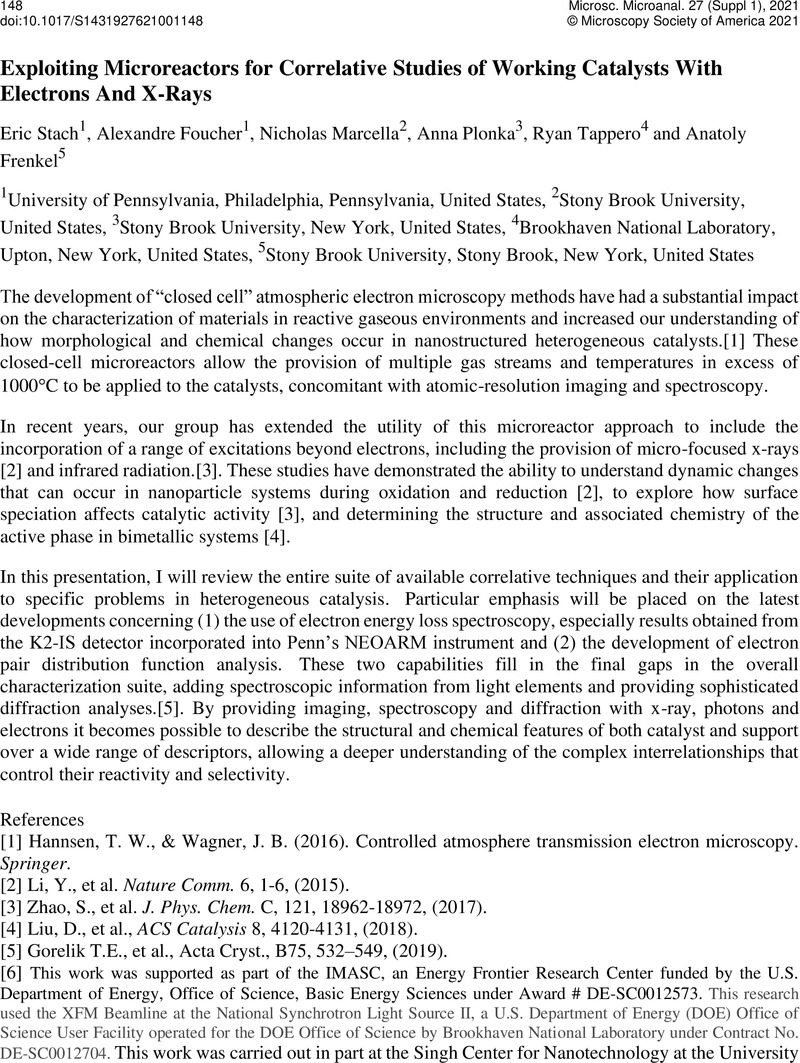No CrossRef data available.
Article contents
Exploiting Microreactors for Correlative Studies of Working Catalysts With Electrons And X-Rays
Published online by Cambridge University Press: 30 July 2021
Abstract
An abstract is not available for this content so a preview has been provided. As you have access to this content, a full PDF is available via the ‘Save PDF’ action button.

- Type
- Nanoscale x-ray and Electron Microscopy Techniques and Applications in Material Science
- Information
- Copyright
- Copyright © The Author(s), 2021. Published by Cambridge University Press on behalf of the Microscopy Society of America
References
Hannsen, T. W., & Wagner, J. B. (2016). Controlled atmosphere transmission electron microscopy. Springer.CrossRefGoogle Scholar
This work was supported as part of the IMASC, an Energy Frontier Research Center funded by the U.S. Department of Energy, Office of Science, Basic Energy Sciences under Award # DE-SC0012573. This research used the XFM Beamline at the National Synchrotron Light Source II, a U.S. Department of Energy (DOE) Office of Science User Facility operated for the DOE Office of Science by Brookhaven National Laboratory under Contract No. DE-SC0012704. This work was carried out in part at the Singh Center for Nanotechnology at the University of Pennsylvania which is supported by the National Science Foundation (NSF) National Nanotechnology Coordinated Infrastructure Program grant NNCI-1542153. Additional support to the Nanoscale Characterization Facility at the Singh Center by the University of Pennsylvania Materials Research Science and Engineering Center (MRSEC) supported by the National Science Foundation (DMR-1720530) is acknowledged.Google Scholar





